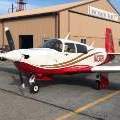Innefficient Descent (going fast)
-
Members Online
- SKI
- TheAv8r
- hammdo
- Bolter
- Chuck Balogna
- Sabremech
- varlajo
- Brandt
- Marc_B
- Marcopolo
- KSMooniac
- TangoTango
- Aleksei
- ohdub
- ta2too
- Jim Peace
- GoDemonDeacons
- Patrick Horan
- EKoS
- Niko182
- neilpilot
- dzeleski
- slowflyin
- ProtoFly
- bradp
- eman1200
- richardbrochu27
- DC_Brasil
- AndreiC
- jeremy anderson
- Reichart162
- 201Mooniac
- AspiringOwner
- UteM20F
- 00-Negative


Recommended Posts
Join the conversation
You can post now and register later. If you have an account, sign in now to post with your account.